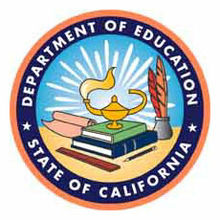As America stems from its recent series of deadly hate crimes and racism, the California State Board of Education on Thursday adopted the nation’s first statewide ethnic studies curriculum for high schools, saying the teaching of discrimination and oppression hasn’t been more important ever before
Following an eight-hour public meeting Thursday, board members voted unanimously, 11-0, to approve the curriculum in hopes will become a model for other states to follow.
Educators and civil rights leaders who spoke at the meeting mourned this week’s killing of eight people, six of them Asian women, in Georgia, as the recent tragic example of racism.
“We are reminded daily that racism is not only a legacy of the past but a clear and present danger,” said Board of Education President Linda Darling-Hammond, who led President Joe Biden’s education transition team.
“We must understand this history if we are finally to end it,” she added.
Crafting the curriculum took three years, drawing over 100,000 public comments as different groups objected to being left out or misinterpreted. Public comment that preceded the board’s vote drew about 150 callers, many of whom asked the board to turn down the curriculum and echoed the heated debate that took place across its drafting. The loudest criticism came from Jewish and pro-Arab groups who accused each other of attempting to silence each other’s histories.
Some callers who identified themselves as Jewish and the descendants of Holocaust survivors said the plan “erased the unique stories of Jews in the Middle East”. Others criticized the curriculum as anti-Arab, saying it white-washed content regarding Arab Americans and erased previous content about Palestinians.
The almost 900-page Ethnic Studies Model Curriculum, which has been years in the making, is supposed to teach high school students regarding the struggles and contributions of “historically marginalized peoples which are often untold in U.S. history courses”. It centers on the four groups that are the focus of college-level ethnic studies: African Americans, Chicano/Latinos, Asian Americans, and Pacific Islanders and Native Americans.
It also dedicated lesson plans on Jews, Arab Americans, Sikh Americans, and Armenian Americans who are not traditionally part of an ethnic studies curriculum “but have important stories to tell about oppression and contributions” to California and the country, state Superintendent of Public Instruction Tony Thurmond said. Those groups were added after objecting to a previous draft that left them out.
California Department of Education officials say this would be the first statewide ethnic studies model curriculum in the United States. Other states have taken different approaches to teach ethnic studies. Oregon is developing ethnic studies standards for its social studies curriculum, while Connecticut high schools will be needed to offer courses in Black and Latino studies by the fall of 2022.
The course materials in California include 33 lesson plans, which schools are not needed to use but can pick from to fit their student communities. Over three-quarters of California’s 6.2 million K-12 students are non-white: 55% Latino, 22% white, 12% Asian or Pacific Islander, and 5% African American.
One lesson plan suggests talking about an incident of police brutality as part of the Black Lives Matter movement. Another urges students to interview Korean Americans and Black residents who were in Los Angeles during the 1992 riots to study how the tensions exploded into deadly violence.
Other lessons ask students to study poetry and art by Japanese Americans put in internment camps during World War II to better understand the hostility they were dealing with.


Leave a Reply